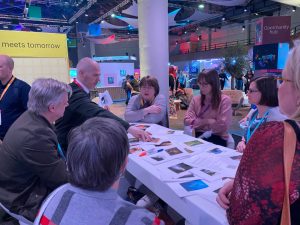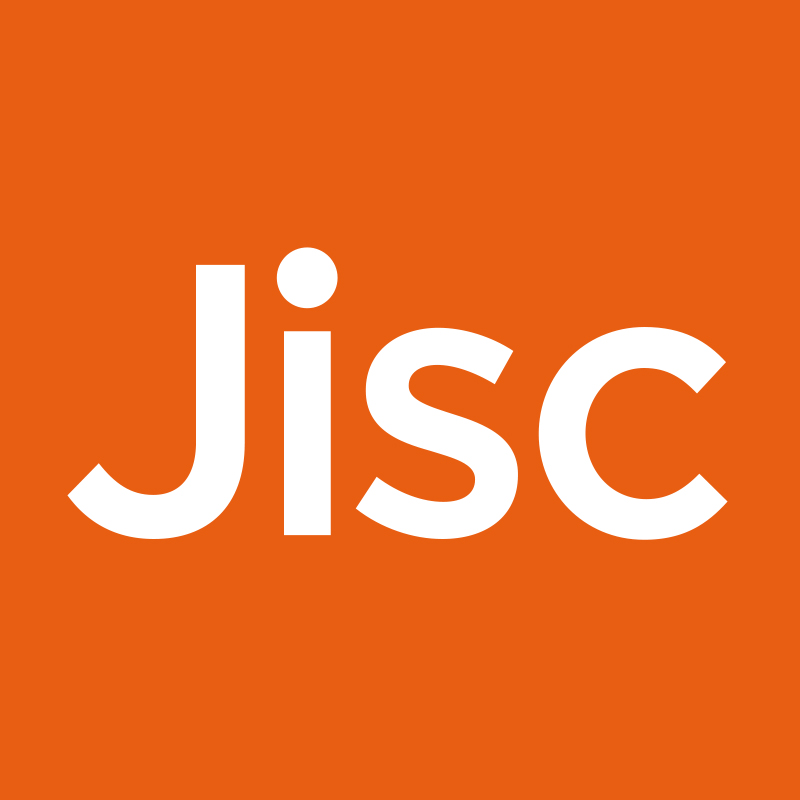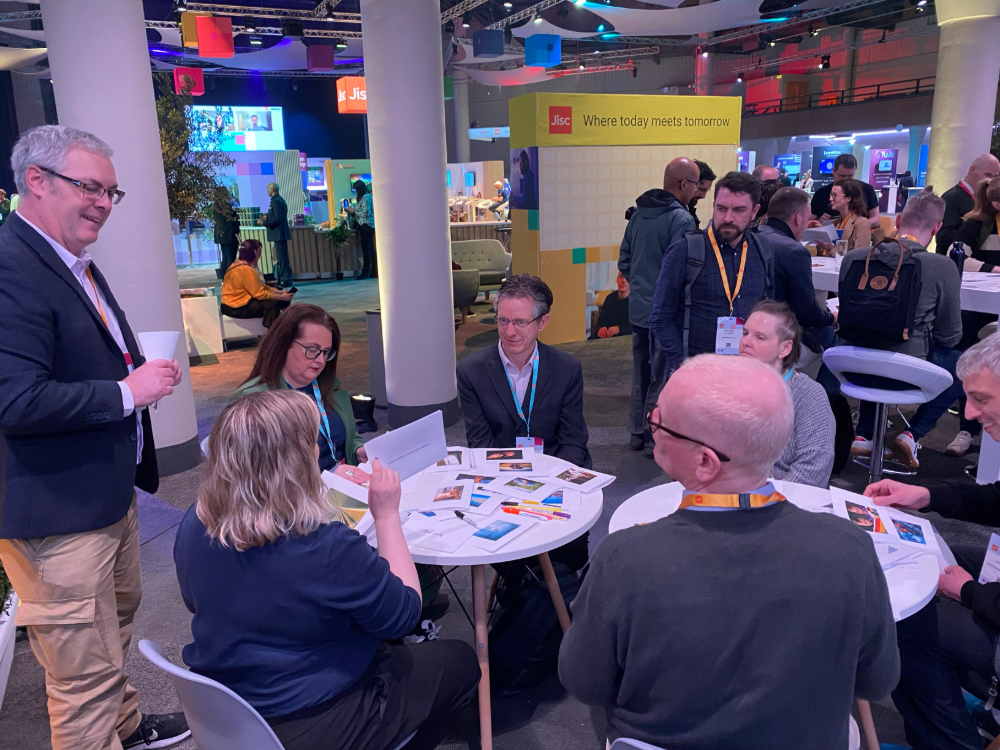TL;DR summary – loads of people turned up to our digital storytelling community activity at Digifest last week. This made me realise something important about humanising learning in a world that is being increasingly automated.
Our storytelling community activity
It was Digifest last week and we were really pleased to run a get-together for the Digital Storytelling community. My heart had sunk a little on hearing that we were scheduled for about 3pm on day 2 which is when people start to head for trains.
But in the end we had about 35 people join us to explore the art of storytelling in learning and how you can apply a digital lens to that process. A fantastic turnout and a really vibrant discussion!
We invited people to tell a story of their own transformation – share a turning point in their lives that was pivotal in bringing them to where they are today.
To help with this we provided a (very analogue) set of images taken from Creative Commons collections and some generated by AI to give people inspiration.
We also invited people to reflect on whether the fact an image was created by a person or an AI tool had any impact on it’s usefulness in helping them to tell their story.
You can download the resources we used for this activity here:
(Please respect the rights of the image creators by following the license requirements for their work)
Storytelling as a humanising force
It was fascinating to see how readily people who were complete strangers fell into the comfortable act of sharing a piece of themselves. There was a constant buzz of chatter and people’s body language was open and relaxed. When so many of our interactions with people are online or asynchronous, it’s reassuring to witness this happening in “actual reality”!
Technologically speaking, we find ourselves at a point where we have the capacity to automate much of what we do. Generative AI is the defining tech of the moment and the Digifest programme bore this out.
I thought we’d end up having an energetic discussion about the nature of AI generated images and whether they have the depth of meaning to support the weight of personal storytelling. In the end, it didn’t seem to be something that bothered people unduly. Yes, there was a qualitative difference between the AI images and person-made ones in some cases, but it didn’t have much of an impact on the actual storytelling.
The stories that people wanted to tell and the conversations that happened as a result were really what people wanted to focus on.
In the end, I started reflecting on something else.
What do we mean by “personalised learning?”
On a personal note, I find much of what we class as “personalised learning” is ironically, quite dehumanised. Much of it involves using data to identify learner progress, extrapolate needs and then serve up content or pathways that match the profile. And there’s a lot of movement towards using AI-powered chat bots as a tool to access information and services.
That’s not necessarily a bad thing. Colleges and universities are trying to operate at scale and at speed, often with limited resources, and at very high stakes. Looking for solutions to deliver services in an efficient way is entirely reasonable.
But as the claimed capabilities of platforms to perform these automated functions in an increasing number of contexts grows, the opportunities for the human interaction we know students actually want starts to diminish. If we use automation to free up time to allow this to happen, then great! I worry, though, that when services and resources are cut to the bone, it makes it very difficult.
What sort of society are we trying to model?
A few times at Digifest, I heard people talking about the importance of developing core skills in creativity, communication, collaboration and the ability to build and maintain relationships. If the learning experience is increasingly one that is mediated by automation, what message does that send to students about what skills are important to develop?
Colleges and universities are often the first examples that young adults encounter of a working environment that isn’t a school. That can be highly influential in shaping their expectations of what will or should happen in the wider world. What do we want it to look like? How can we set their expectations in a way that shapes the world for human flourishing?
Learning to be a storyteller, actively encountering other people’s stories, and listening empathetically (and critically) to the narratives that surround us, can be part of that humanising effort. These are quintessentially human skills.

So that’s why the people and the stories we encountered at our community session at Digifest this year was so encouraging. There’s a genuine appetite for ways to make learning about relating to people.
Images: Natasha Veenendaal

